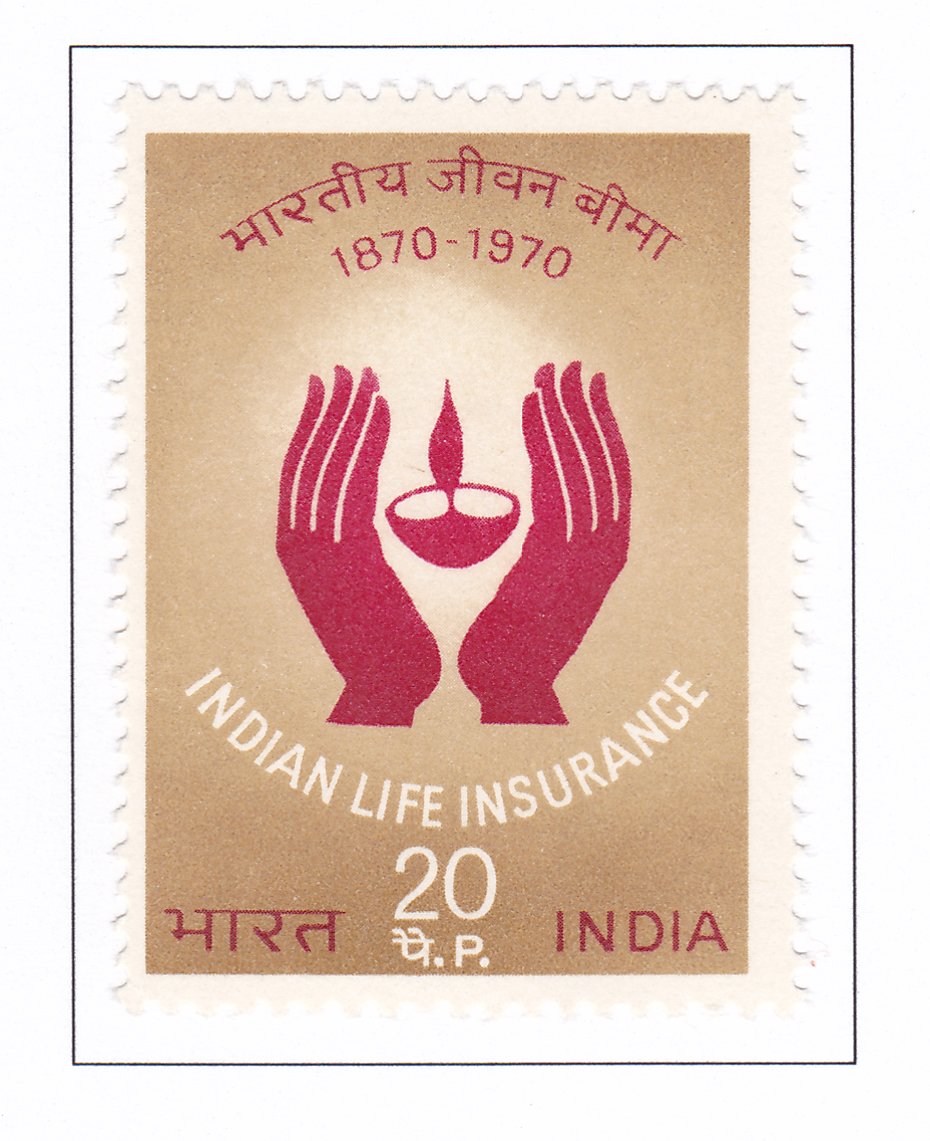Indian Life Insurance

Technical Data
| Date of Issue | January 11, 1971 |
|---|---|
| Denomination | 20 nP |
| Quantity | 3,000,000 |
| Perforation | comb 13 |
| Printer | Security Printing Press, Nashik |
| Watermark | No Watermark |
| Colors | Crimson | Sepia |
| Catalog Codes |
Michel IN 517 Stamp Number IN 533 Yvert et Tellier IN 316 Stanley Gibbons IN 631 |
| Themes | Anniversaries and Jubilees | Hands | Lamps and Candles | Seals(Emblems) |
The history of insurance stretches back as far as the story of mankind itself, but the concept of life insurance, as we understand it today, has largely developed over the past 400 years. In India, the institution of joint families provided protection to its members for ages, but with the gradual breakdown of this system, the modern concept of life insurance has gained prominence.
Before 1870, life insurance business in India existed, but its benefits were mainly accessible to European settlers or specific sectarian groups. Policies were issued mostly by European companies, and there were restrictions based on caste and creed.
The year 1870 marked a significant turning point in the history of life insurance in India with the establishment of the first truly Indian life insurance company. This company accepted Indian lives without any distinction or restriction, opening up life insurance to a broader population.
Since then, the story of Indian life insurance has been one of steady progress. Competition between foreign insurers and Indian initiatives in the early stages fostered the development of life insurance in the country. This competition led to various benefits for policyholders and contributed to the popularity of life insurance.
Legislation preceding World War II, culminating in the Insurance Act of 1938, aimed to protect the interests of policyholders and helped Indian insurers maintain healthy growth. Over time, the purpose of insurance expanded beyond providing a sum of money at death or the end of a specified term to include mobilizing savings for the public good.
On January 19, 1956, the Indian government nationalized the life insurance business, leading to the establishment of the Life Insurance Corporation (LIC) on September 1, 1956. The LIC took over the liabilities of 245 private insurers and provident fund societies, becoming the sole provider of life insurance in the country.
Since its inception, the LIC has played a crucial role in safeguarding the hopes and futures of millions of families in India. It has grown into the largest nationalized life insurance institution in the democratic world, with its operations expanding significantly over the years.
In a remarkable coincidence, the State’s entry into the insurance sphere was first contemplated in 1870, around the same time as the establishment of the first Indian life insurance company. The Postal Department introduced a life insurance scheme for its employees in 1883, gradually extending it to cover all government and quasi-government employees.
Recently, the Life Insurance Corporation celebrated the centenary of the Indian life assurance industry, and the Posts and Telegraphs Department feels honored to commemorate this event by issuing a commemorative stamp.
